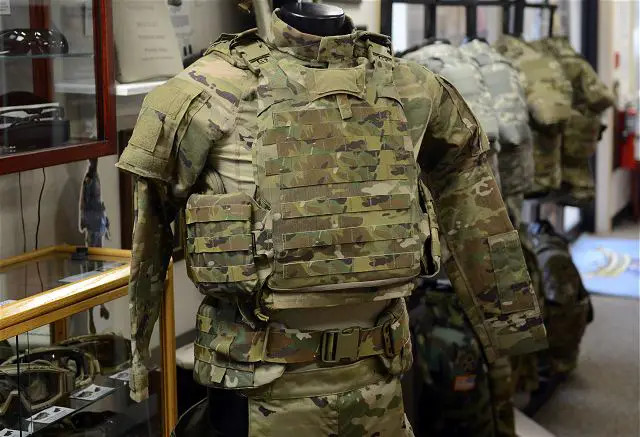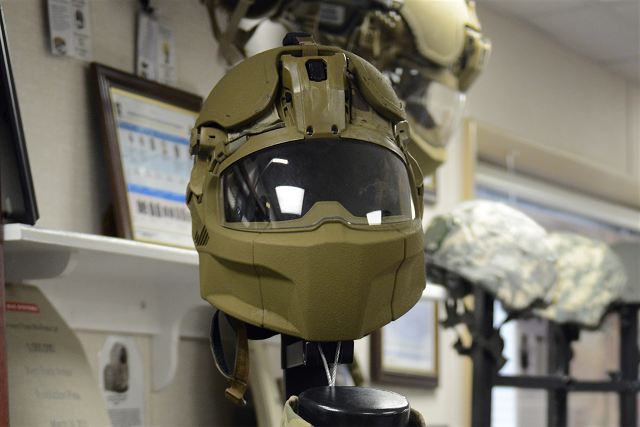New U.S. SPS Soldier Protection System offers greater scalability and more options 11803172
|
|
|||
|
Military Defense Industry Technology - US Soldier Protection System
|
|||
|
|
|||
| New U.S. SPS Soldier Protection System offers greater scalability and more options. | |||
|
U.S. Army develops new torso and extremity protection system (TEP) which is a part of the of the new Soldier Protection System (SPS) under development now at PEO Program Executive Office Soldier. The SPS includes both the TEP and the integrated head protection system.
|
|||
|
|
|||
 The Torso and Extremity Protection System" or TEP, under development now at Program Executive Office Soldier, sheds about five pounds of weight from the IOTV, and also adds a wide degree of scalability that commanders can make use of depending on threat level and mission. (Photo Credit: C. Todd Lopez) |
|||
|
|
|||
|
The TEP can replace the IOTV (Improved Outer Tactical Vest), at less weight and greater scalability, depending on the mission. It includes the modular scalable vest, the ballistic combat shirt, the blast pelvic protection system, and a battle belt, which is aimed at getting weight off a Soldier's shoulders and onto the hips.
With the TEP, commanders can require Soldiers to go with full protection -- which provides the same level of protection as a fully-loaded IOTV -- or go all the way down to wearing soft armor under their uniforms for missions that require less protection.
The IOTV sometimes required Soldiers to wear the deltoid auxiliary protection -- cumbersome parts that snapped on to the IOTV and protected their shoulders. Soldiers might have also been asked to wear the smaller, easily-lost collars that also snapped on to the IOTV. Both are gone with the TEP. They've been replaced by the ballistic combat shirt, which is a shirt with breathable fabric and which also includes those smaller ballistic protection parts built in. Soldiers would wear the BCS under the TEP's modular scalable vest. |
|||
|
|
|||
 The average generation II improved outer tactical vest weighs about 26 pounds (11.8 kg) |
|||
|
|
|||
|
The TEP also includes the blast pelvic protection system, which is designed to protect a Soldiers thighs and groin against ballistic threats and burns. The BPPS is meant to replace the current combination of the pelvic undergarment and the pelvic outer-garment, or "PUG" and "POG." The PUG has sometimes been referred to as "ballistic underwear."
The battle belt included with the TEP is part of a weight management system, but it also offers some protection as well. "It's designed to remove the weight from your shoulders and put it on your hips," Brown said. Whereas Soldiers might strap a radio or other gear onto their IOTV in the past, the battle belt can now take that gear and move the weight onto a Soldier's hips.
Brown said that after successful ballistic testing, production of the TEP will begin in probably May of this year, and that Soldiers could see it in 2018 or 2019. |
|||
|
|
|||
 The IHPS (Integrated Head Protection System) also includes add-ons for the base helmet, including a visor, a "mandible" portion that protects the lower jaw, and a "ballistic applique" that is much like a protective layer that attaches over the base helmet. |
|||
|
|
|||
|
Another part of the Soldier Protection System is the integrated head protection system, or IHPS. In its full configuration, it looks similar to a motorcycle helmet.
The IHPS consists of a base helmet, similar to the polyethylene enhanced combat helmet that some Soldiers are already wearing. The IHPS also includes add-ons for the base helmet, including a visor, a "mandible" portion that protects the lower jaw, and a "ballistic applique" that is much like a protective layer that attaches over the base helmet. The complete ensemble is known as the "high threat configuration." Maj. Jaun F. Carleton, also with PEO Solider, had a pair of new sunglasses that are authorized for use by Soldiers if they want to buy them, or if their commanders buy them for them.
|
|||


























